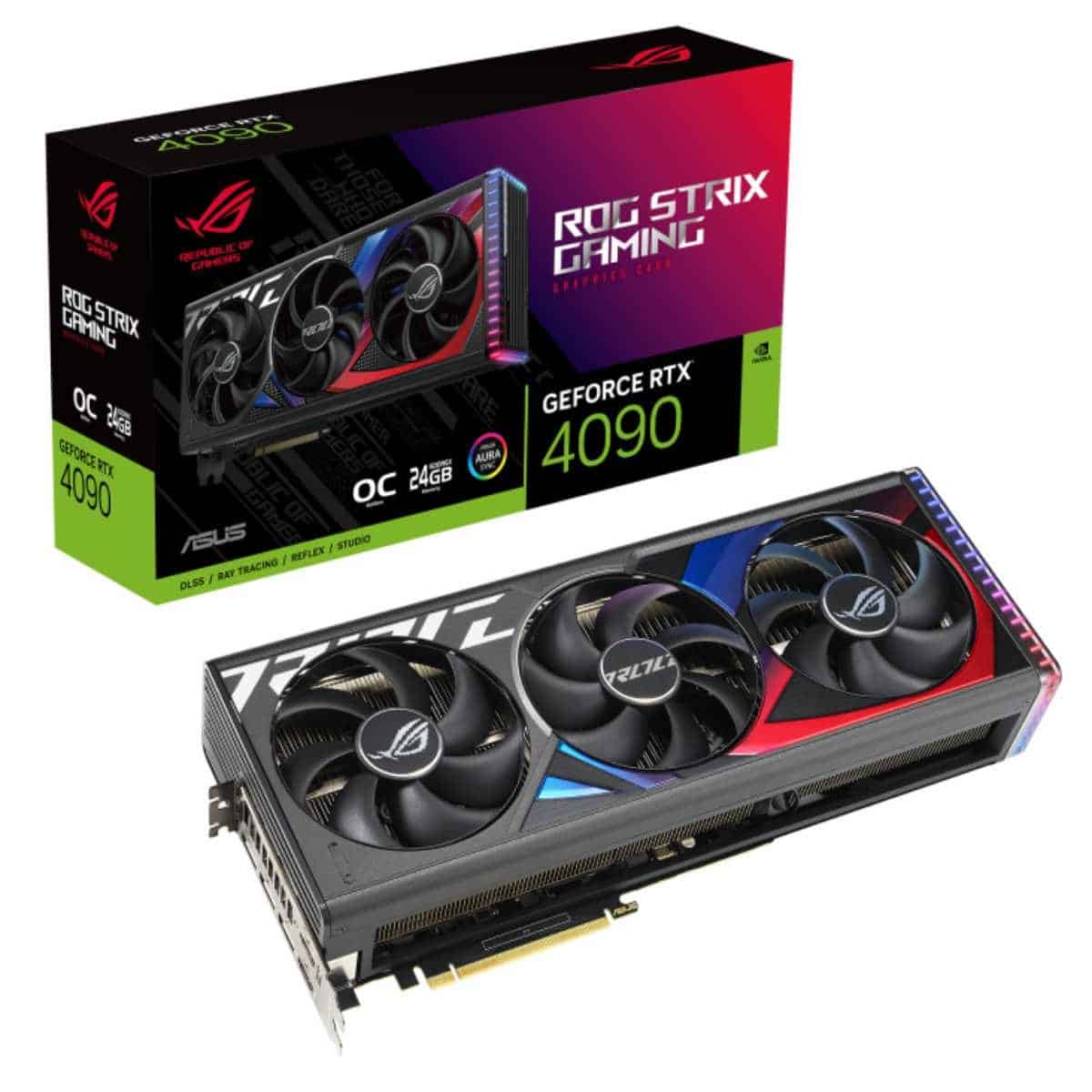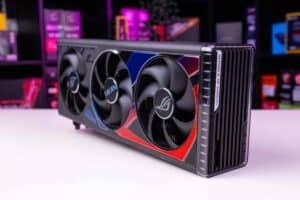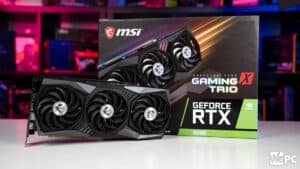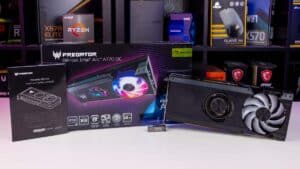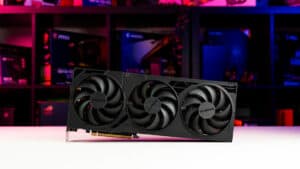Best GPU for Intel 13th Gen – our top graphics cards for Raptor Lake
Wondering what to pair up with your shiny new CPU? We bring you the top GPUs for Raptor Lake
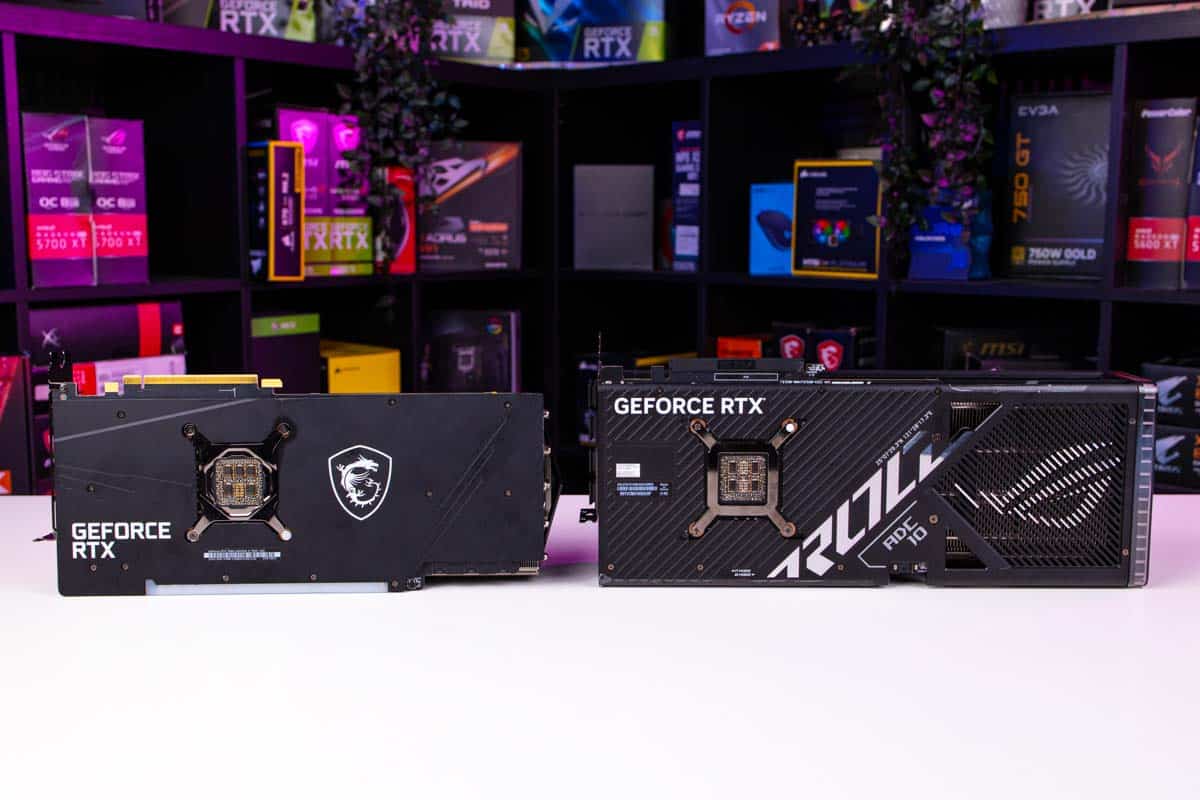
WePC is reader-supported. When you buy through links on our site, we may earn an affiliate commission. Prices subject to change. Learn more
If you’re after the best GPU for Intel’s 13th Gen, we have you covered. Matching up your Raptor Lake CPU with a great graphics card makes sure you get the best gaming experience from your build. After the successful launch of Intel’s 12th generation processors, Intel has come up with the 13th generation processors. These processors are based on the same 10nm manufacturing process as used in the Alder Lake.
Intel has also worked on low power consumption, more cores, and increased clock speeds. It provides up to 24 cores and 32 threads. The 13th-generation processors also support the use of DDR4 memory. With this generation’s release, there was also a new generation of graphics cards to enjoy. Both Nvidia and AMD had new GPUs you could pair together with a new best CPU. So let’s see the range of options we would recommend.
Best GPU for Intel 13th Gen
With a wide range of CPU options, we also have a wide range of graphics cards. Spanning the price range with options from the best Nvidia and AMD Radeon GPUs.
Best overall GPU for Raptor Lake

ASUS ROG Strix RTX 4090 OC
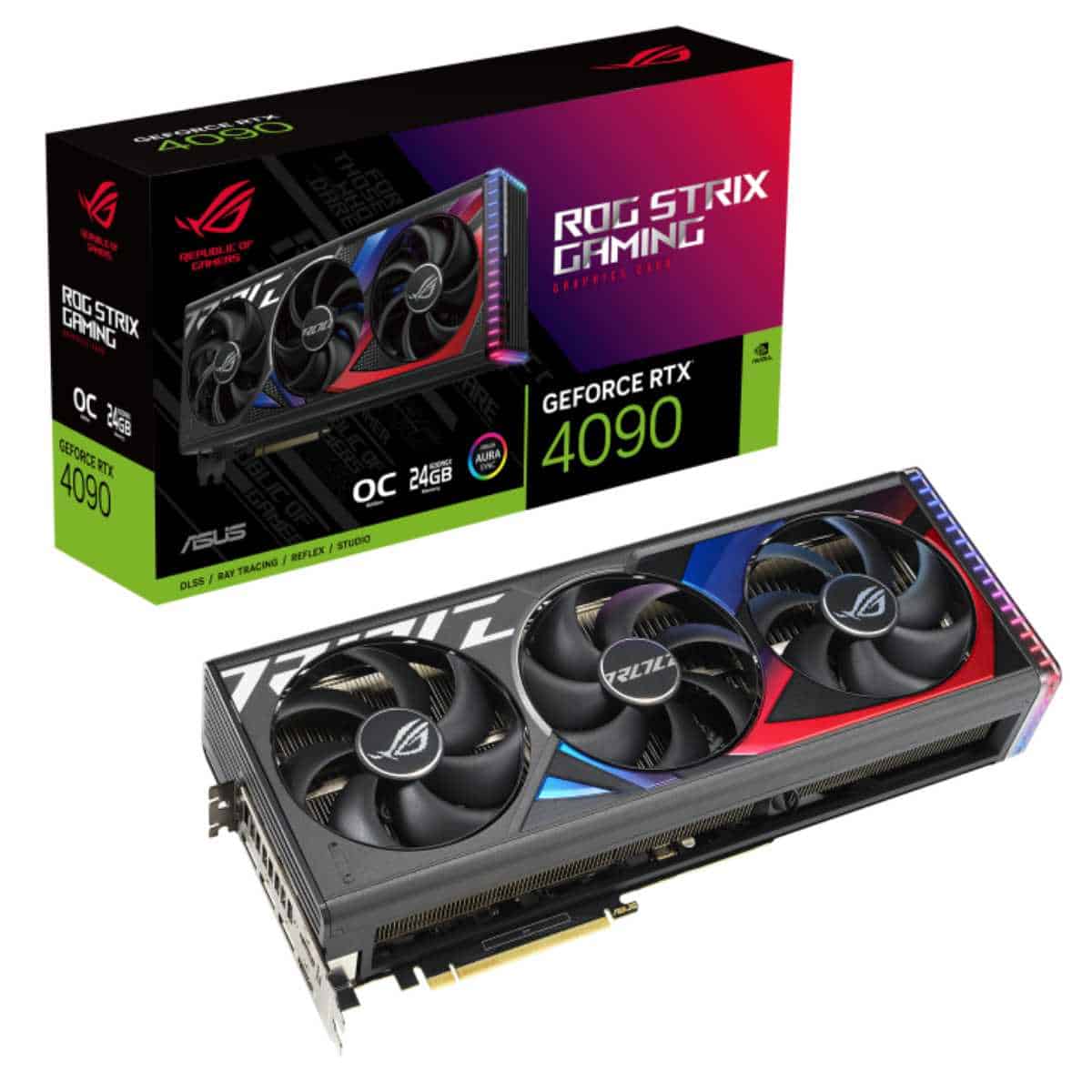
Core Clock Speed
2,640 MHz boost
CUDA Cores
16,384
Memory Size
24GB GDDR6X
Dimensions
357.6 x 149.3 x 70.1mm
PSU Required
1000W
TDP
450W
- Excellent air cooling solution
- Pushes performance above the rest of the selection
- Updated design cooling and aesthetically focused
- A more expensive choice over the rest of the picks and will cost a lot to run
So, before using a 13th Gen processor, gamers must have a high-quality graphics card to maximize the performance of these CPUs. At the moment there’s nothing that beats the RTX 4090. It beats out everything out there. With an upgraded core and spec it reaches further than the older gen. So it is definitely the best pick for the top end of the new CPU generation. Both will complement each other to unlock each other’s full potential.
You will also not be required to have a high-end motherboard. As the 4090 still is based on the PCIe Gen 4 spec and so does not require the newer tech some newer products include. So you can save yourself some money with a lot of choices. However, you will have to consider your power supply. With the high board power of the GPU and high rates of the new 13th Gen, there is a lot of power to supply to the system.
As we found in our RTX 4090 review we got hands-on with the GPU and found its full potential with all the power it has behind it. With hundreds of FPS across the board, you can easily enjoy anything you might chuck at your system.
Best AMD GPU for Intel 13th Gen
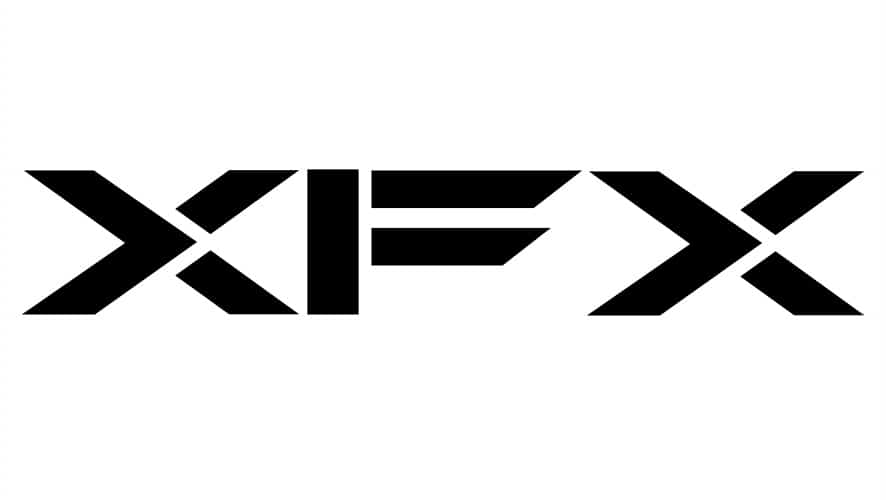
XFX SPEEDSTER MERC 310 AMD Radeon RX 7900 XTX
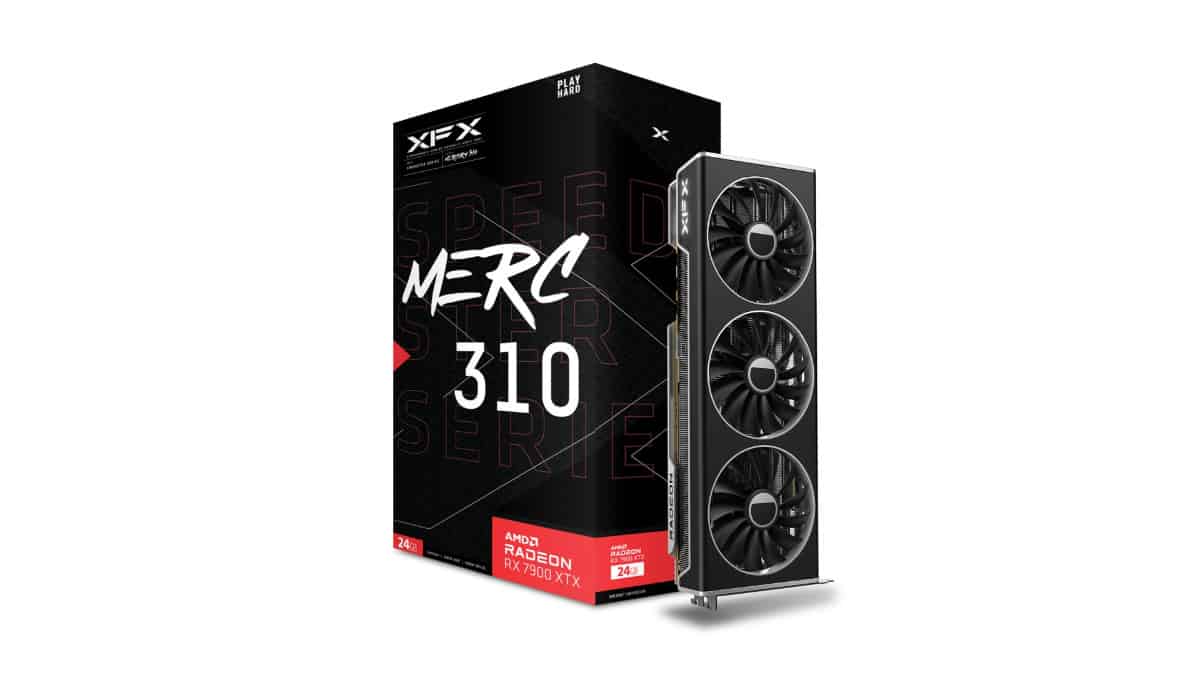
Core Clock Speed
1,855 MHz base, 2,455 MHz game, 2,615 MHz boost
Stream processors
6,144
Memory Size
24GB GDDR6
Dimensions
344 x 128 x 57mm
PSU Required
850W
TBP
355W
- A cheap basic alternative without any extras on top
- Simple and basic design without any additions
- Lower quality build with plastic builds
Now claiming the top spot in AMD’s lineup for Raptor Lake, the RDNA 3 cards boast significant enhancements. With each generation, performance sees a notable uptick, particularly evident in the flagship RX 7900 XTX, which competes favorably against Nvidia counterparts. Offering an impressive price-to-performance ratio, these cards present a compelling alternative to Team Green’s offerings, backed by robust software support promising further performance boosts if needed.
The Navi 31 XTX GPU, fabricated on TSMC’s 5 and 6nm process, adopts an MCM design, enhancing chip yield. Featuring a total die size of 520mm² housing 57.7 billion transistors, it incorporates 24GB of GDDR6 memory with a 384-bit memory bus, boasting a bandwidth of 960 GB/s at a clock speed of 20 Gbps. Notably, clock speeds are segregated, with a shader clock of 2,269 MHz distinct from the base, game, and boost clocks, which stand at 1,855 MHz, 2,269 MHz, and 2,499 MHz, respectively. These frequencies drive 6,144 shading units, 284 TMUs, 192 ROPs, 96 compute units, and 96 RT cores.
In our review of the RX 7900 XTX, we witness its exceptional performance across various metrics, including impressive 4K gaming capabilities. While it may not match Nvidia’s prowess in ray tracing and rendering, its gaming performance stands strong on its own merits.
Best Nvidia GPU for Intel 13th Gen
MSI RTX 4080 SUPER VENTUS 3X OC
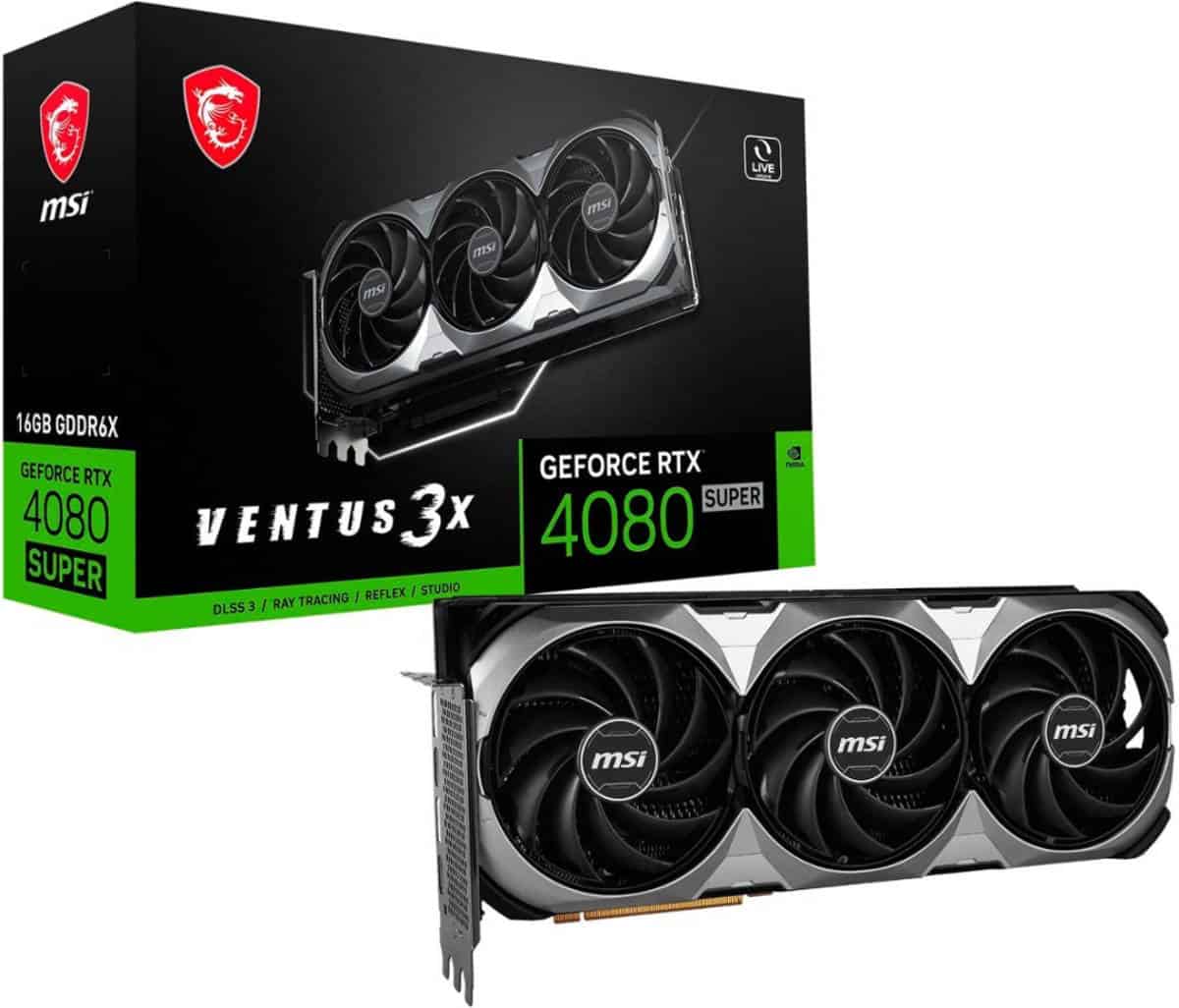
Core clock speed
2.580GHz boost, 2.025GHz base
CUDA count
10,240
Memory
16GB GDDR6X
Dimensions
322 x 136 x 62 mm
PSU required
750W
TBP
320W
- Slim form factor
- Incredible design and quality
- Utilizes 16-pin power connector
- Replaces one DisplayPort with a HDMI connector for two of each
When seeking the best Nvidia GPU for value for the 13th Gen, numerous choices abound. However, for the current top pick, attention is best directed towards the latest generation, where enhanced optimizations and performance values are prevalent. Enter the RTX 4080 Super, offering exceptional performance across the board, particularly excelling in handling 4K textures, thanks to its ample 16GB of GDDR6X VRAM.
Notably, its 256-bit bus, coupled with a 23 Gbps memory clock, yields an impressive 736 GB/s bandwidth. This speed is complemented by a robust overall clock rate, featuring a 2,295 MHz base clock and a 2,550 MHz boost clock. Fabricated using TSMC’s 5nm process, the AD103-400 GPU boasts a die size of 379mm², accommodating 45.9 billion transistors. With 10,240 CUDA cores and 80 RT cores, it delivers substantial power, albeit with a 320 W TGP.
While its predecessor, the 4080, previously held this position, the leap to the 4080 Super justifies the upgrade. Despite enhancing upon the original, the 4080 Super manages to lower its price to under $1,000, making it a more feasible option. In our testing of the 4080 Super, although it may not soar significantly above its predecessor, it undeniably offers superior value in either case.
Best value GPU for 13th Gen


Sapphire Pulse AMD RX 7700 XT
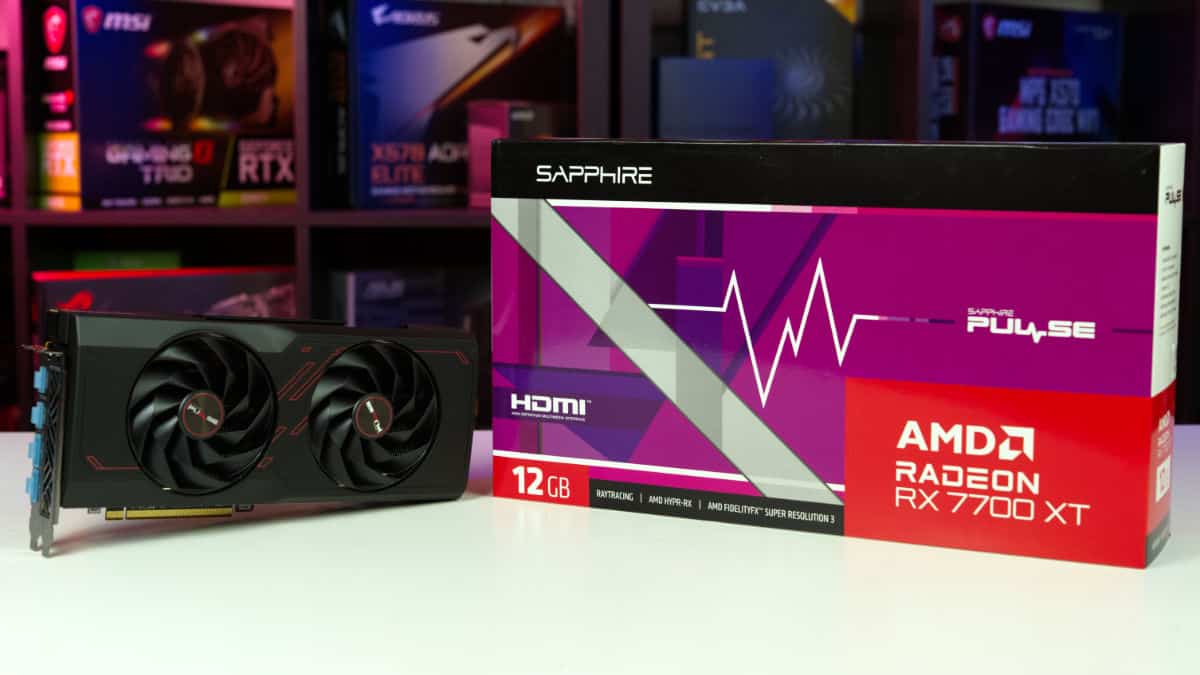
Core clock speed
1,900MHz, 2,171MHz Game, 2,544MHz max
Stream processors
3,456
Memory
12GB GDDR6
Dimensions
280 x 128.75 x 52.57 mm
PSU required
700W
TBP
245W
- Great performance for a sub $500 GPU
- Well-designed cooling keeps temps at less than 85°C
- Sapphire Pulse keeps the price low without unnecessary extras
- Only $50 less than the RX 7800 XT which has better framerates
- Ray tracing performance is still lackluster, but much improved
- Relatively high power draw even compared to its predecessor
Following the closure of the gap in its RDNA 3 lineup, AMD has unveiled an enticing array of options for gamers. Among these, the RX 7700 XT stands out as an excellent pick for 1440p gaming, seamlessly bridging the transition from the beloved RDNA 2 series and offering a much-needed solution.
Representing the new generation, the chip, in its Navi 32 XL variant, adopts an MCM design, with the GCD utilizing TSMC’s 5nm process and the MCDs employing TSMC’s 6nm process. Sized at 200mm² and 150mm² respectively, they collectively house 28.1 billion transistors, facilitating 3,456 stream processors, 54 compute units, and 54 ray accelerators, operating at clock rates of up to 2,544 MHz and a game clock of 2,171 MHz.
In terms of memory, it integrates 12GB of GDDR6 memory, clocked at 18Gbps across a 192-bit bus, delivering a bandwidth of 432GB/s. This configuration presents a superior solution compared to the limitations of the RTX 4060 Ti, particularly advantageous for upcoming and new games demanding extensive memory resources for textures. Coupled with its appealing MSRP, the RX 7700 XT emerges as a compelling choice for gamers seeking both performance and value as we thoroughly test and experience in our 7700 XT review.
Best budget GPU for 13th Gen
MSI Ventus 2X Black RTX 4060 8GB
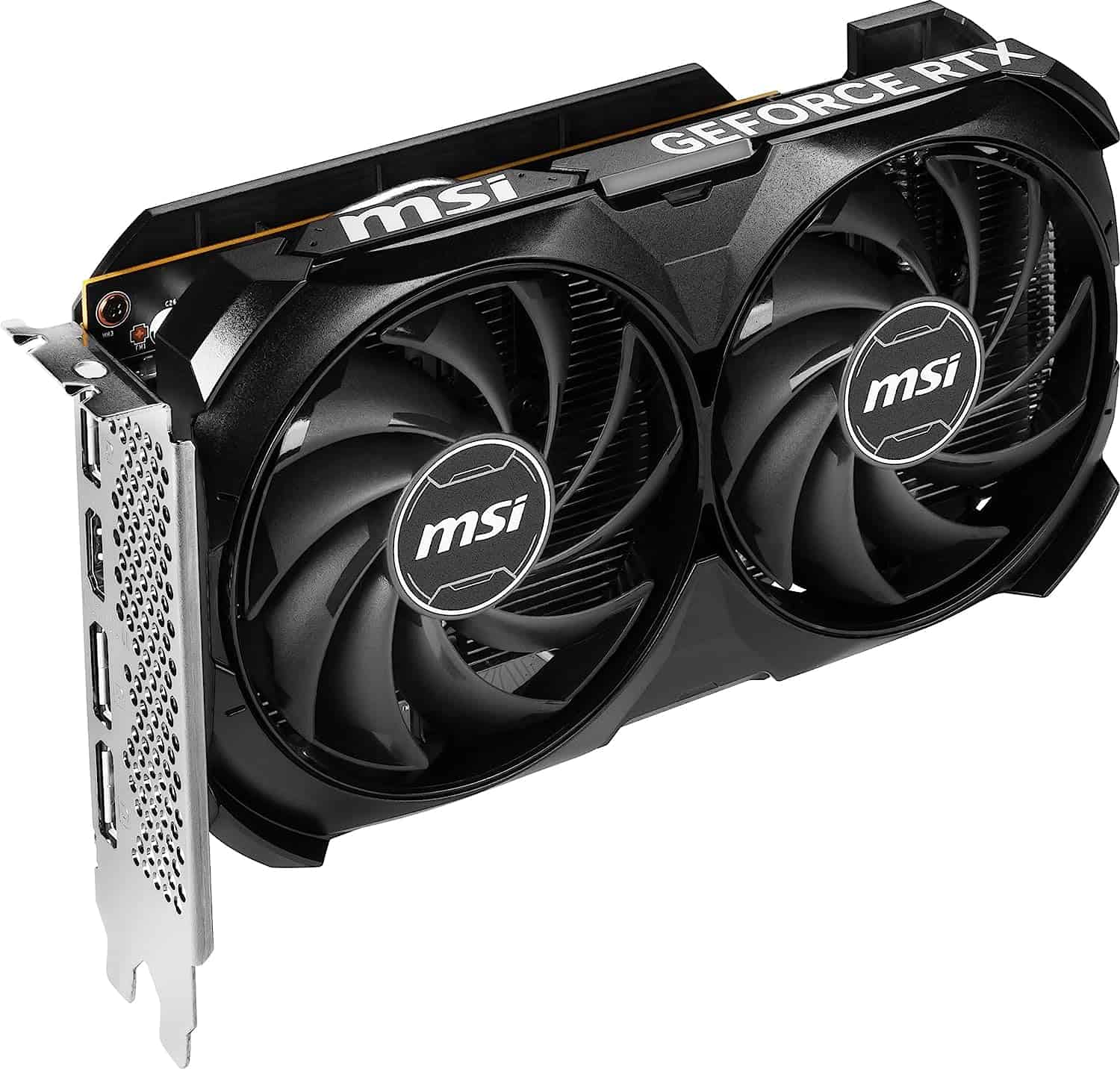
Clock Speed
2,505MHz (MSI center), 2,490MHz without
VRAM
8GB GDDR6
Thermal Design
Twin Fan
Power Input
1x 8 pin EPS
Size
199 x 120 x 41 mm
- Cheapest Ada card with DLSS 3 access
- Small and compact design
- Not much improvement over previous gen
- Expensive for what it has to offers
For budget-conscious gamers on the low end of the 13th Gen, the RTX 4060 emerges as a solid choice. Representing a robust entry into the Ada series GPU lineup, it offers a compelling option at a relatively low cost. Priced at $299 MSRP, it marks a slight increase in entry cost compared to its predecessors, yet its features justify the investment. Primarily geared towards 1080p gaming, it serves as a foundational card, albeit facing limitations with higher resolutions due to its more constrained memory capacity.
The 4060 model boasts 3,072 CUDA cores, 96 TMUs, 48 ROPs, 24 SMs, 96 Tensor cores, and 24 RT cores. Equipped with 8GB of GDDR6 memory utilizing a 128-bit memory bus, it achieves a total bandwidth of 272GB/s. With a power consumption of 115W, it maintains a base clock of 1,830MHz, capable of boosting up to 2,460MHz, with potential for further overclocking, especially with MSI’s card providing an additional 30 MHz boost and more through software tweaks.
In our assessment of the 4060, we witnessed its commendable strength and performance at the entry-level segment. While it excels in delivering triple-digit frame rates at 1080p, particularly in less demanding titles, it falls short in more graphically intensive games like Cyberpunk 2077. The limited 8GB of memory proves to be a bottleneck for higher resolutions, necessitating reliance on upscaling techniques to compensate.
Do I need a new GPU for Intel 13th Gen?
When it comes to building a new system with your Intel 13th Gen chip, then you may be wondering what GPU to get. But if you already own one then you may not necessarily need to grab a new graphics card to pair it with.
Although a lot of time it may in fact be your GPU throttling and not being able to achieve more, it is also occasionally your CPU. So with CPU throttling upgrading to the new gen will potentially alleviate the bottleneck and you can unlock more performance. This is seen in games like Microsoft Flight Simulator. So once you get this new hardware, you then may want to consider a newer pick. As it is now got headroom to improve and perform better.
What GPU to pair with Intel 13th Gen?
There is a wide range of performance and budget when pairing up your 13th Gen. If you’re looking for no compromise gaming at the top end, we recommend the RTX 4090 for everything you might need. However, more reasonable choices towards the top end include the RX 7900 XTX and RTX 4080 Super for a bit more value but still great performance. Towards the lower end, you have the choices of the RX 7700 XT and RTX 4060, which provide strong value propositions for more entry-level gaming.
Final word
With that, there are a lot of choices to think about when picking out which is the best GPU for your Intel 13th Gen Raptor Lake CPU. It’s best to pair up the level of CPU and GPU as best as possible. If you have a lower-end CPU it’s best not to have a high-end GPU and bottleneck it, so you need to weigh up the options.
There are also more cards expected soon enough, if RDNA 3 or RTX 40 hasn’t excited you you might not have to wait too long. With the RTX 50 series and RDNA 4 expected by the end of 2024, there might be something more appealing on its way.

